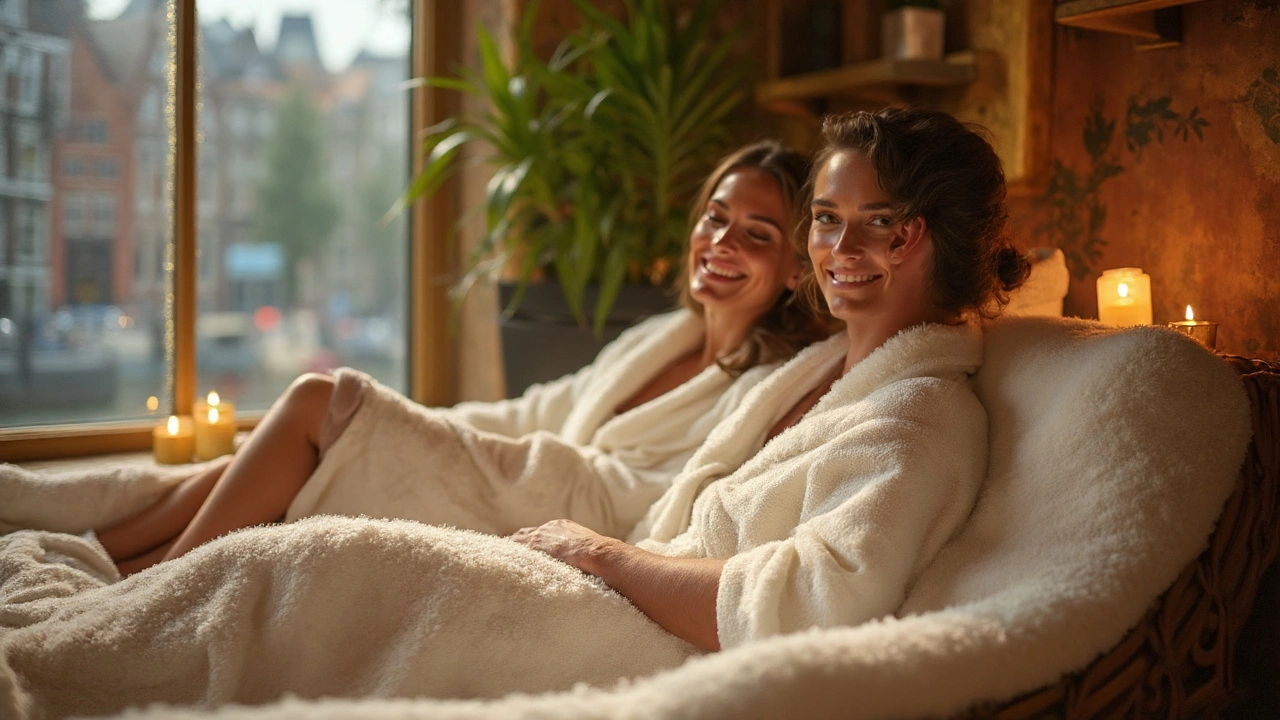Head Massage: Essential Self-Care for Everyday Relief

Some days, your head feels like a tightly wound ball of tension. You rub your temples but the ache just won’t go away. Head massage is a game-changer—think of it as hitting the reset button for your mind and body, all in 20 minutes flat.
There’s more to it than just feeling good. Head massage supports blood flow, helps you relax, and can even give your concentration a real boost. Struggling to fall asleep or dealing with constant stress? This simple practice can make a world of difference with zero effort or fancy tools.
You don’t need to book a luxury spa day or block out your whole afternoon—there are quick sessions at local wellness studios, and even techniques you can try at home. The best part? You get all the benefits by simply letting someone press, knead, and stroke the scalp and neck. Sounds easy, right?
- Key Takeaways
- Quick Answer: Why Head Massage Matters
- Head Massage 101: The Basics
- Proven Benefits for Mind and Body
- Where to Find Head Massage Services Near You
- What Happens During a Head Massage
Key Takeaways
- A head massage isn’t just a luxury—it’s a real self-care tool proven to help with stress, tension headaches, and sleep problems.
- With regular sessions, you’ll notice improvements in scalp health and might even see stronger hair growth because of better blood flow.
- You don’t need any expensive gear—many techniques work with just your hands, whether you book a pro session or ask a friend for help.
- Sessions are usually quick, often lasting 15 to 30 minutes, and fit right into a busy day without any downtime needed afterward.
- It’s safe for most people, but if you have scalp conditions, injuries, or certain medical issues, you should ask your doctor first.
- Prices vary a lot by location and service style, but many find head massages affordable compared to longer spa treatments.
- If you’re nervous, know what to expect: you can ask for softer or firmer pressure, and you get to stay fully clothed during sessions.
Quick Answer: Why Head Massage Matters
So, why bother giving so much attention to your noggin? Here’s the thing: a head massage isn’t just about relaxation. It offers real, physical benefits that go way beyond those good vibes you get lying back.
Let’s get down to the facts. When your scalp is massaged, blood flow in the area increases, which means more oxygen and nutrients for your hair follicles. That can support hair health and sometimes even encourage thicker growth. People who get regular head massages often report fewer headaches, less tension in their jaw and neck, and, believe it or not, better sleep quality. Not to mention, the decrease in stress hormones is backed by research—one 2016 study found that 15 minutes of scalp massage lowered blood pressure and heart rate in stressed adults.
When you’re dealing with daily tension (and who isn’t?), this quick fix can be a real lifesaver. You might be surprised how much you notice:
- Tension melting in your temples and neck
- That “heavy” head feeling fading out
- Your mood perking up, thanks to a rush of feel-good chemicals
- Improved focus after just a short session
If you like data, here’s a quick look at head massage benefits that recent studies and experts highlight:
| Benefit | Quick Fact |
|---|---|
| Reduces Stress | Scalp massage can drop cortisol (stress hormone) by up to 31% |
| Boosts Hair Health | Daily 4-min massages improved hair thickness in 69% of people in one study |
| Improves Sleep | Short sessions before bed helped 60% of participants fall asleep faster |
| Lessens Headaches | Over half of regular users reported fewer migraines |
In short, head massage is a small act of self-care with a long list of proven perks.
Head Massage 101: The Basics
So, what exactly is a head massage? At its core, it’s a hands-on technique that focuses on the scalp, temples, forehead, neck, and sometimes even the shoulders. The idea is simple: using fingers, palms, or even basic massage tools, rhythmic motions help relieve tension you probably never realized you were carrying.
When most people think of head massage, two styles usually come to mind. The first is the old-school Indian head massage—sometimes called “Champissage”—which has been around for over a thousand years and mixes pressure, gentle tapping, and circular strokes. Then, there’s the Western approach, which often finds its way into hair salons (think that relaxing scalp rub during a shampoo). Both aim to boost circulation in the scalp and release built-up stress.
What happens in a standard session? Usually, you’ll sit upright or lie down while the practitioner works through your scalp, applying light to moderate pressure. They might use oils, especially in traditional treatments, but for most people, it’s completely optional. The whole thing is designed to chill you out, reduce headaches, and even support healthy hair growth.
- You don’t need fancy equipment—just clean hands or a simple scalp massager does the trick.
- Regular head massages can be part of a weekly self-care routine—you can even do a basic version while watching TV or right before bed.
- No, you don’t need a therapist every time. There are quick DIY techniques you can try in the shower or with dry hair.
People often wonder if head massage is safe for everyone. In most cases, yes—but you should skip it if you’ve had recent head injuries, scalp infections, or severe migraines. A good rule: if something feels off, check with your doctor or practitioner before trying it yourself.

Proven Benefits for Mind and Body
Head massage isn’t just about feeling relaxed. There’s some real science and practical evidence behind why it works. Here’s what actually happens when you give your scalp some love:
- Stress relief: Just 15 minutes can lower cortisol—the stress hormone—by up to 31%, according to a small clinical trial from 2023. You walk out feeling lighter, almost like tossing off a heavy coat you didn’t know you were wearing.
- Better sleep: A lot of people notice they fall asleep faster and sleep deeper after a session. Massaging the scalp boosts serotonin, the “feel-good” chemical, which helps you wind down before bed.
- Headache relief: If you’re tired of popping painkillers, try this first. Massaging your scalp can cut down on tension headaches for most people. In one study of migraine sufferers, over half reported less pain after weekly head massages for a month.
- Better focus: It might sound odd, but massaging your head increases blood flow so your brain gets more oxygen. People often say they can think more clearly after a session—handy during busy work weeks.
- Boosted scalp and hair health: When you massage the scalp, you stimulate hair follicles and natural oil production. Over time, this can lead to thicker, shinier hair and less dryness or itchiness.
Here’s what the research and user reports boil down to:
| Benefit | Reported Improvement |
|---|---|
| Stress Levels | Up to 31% drop in cortisol |
| Sleep Quality | Majority report faster sleep onset |
| Headache Frequency | Over 50% noticed fewer headaches |
| Scalp Health | Improved hydration and less itching |
If you’ve ever left a massage with that “where has my headache gone?” feeling, this is probably why. It’s easy to fit into your week and doesn’t just feel good—it’s good for you.
Where to Find Head Massage Services Near You
Finding a top-notch head massage isn’t as complicated as it might sound. These days, you have plenty of options, and you don’t need to live in a big city to get a great experience. Most urban areas have dedicated wellness centers, day spas, and massage studios that offer a menu with scalp massage as a standalone option or as an add-on. Many hair salons throw in a short head massage with a hair wash—just ask if you want a little extra pampering while you’re there.
If you’re unsure where to start, check local listings online. Google Maps, Yelp, and even Facebook Business pages are loaded with real reviews. Look for businesses with recent feedback and consistent high ratings. Most booking platforms, like Mindbody or Treatwell, also highlight locations that specialize in different types of massage, so you can pick the one that fits your needs.
Not all practitioners are created equal. Make sure staff are certified and trained in relaxation or therapeutic massage. Don’t be shy to call up and ask about their credentials. Some places even post their massage therapists’ certifications on their website—so definitely browse before you book.
If you want a home service, plenty of mobile massage therapists will come straight to your door. Apps like Soothe and Urban let you set up an appointment in a few taps (availability may vary by area).
Here’s a quick checklist to help you out:
- Read recent reviews and ratings
- Check if massage therapists are certified
- Look for easy online booking options
- Ask about what’s included in the session (length, oils or tools, etc.)
- Compare prices and see if there are any first-time deals
And remember—good communication is key. Be upfront about what you want from your session, whether it’s pure relaxation or relief from tension headaches. As health coach Dr. Emma Haynes says,
"A well-trained massage therapist will tailor the pressure and focus to your needs, so you'll get exactly what your head and mind really need."
What Happens During a Head Massage
So what does a real head massage actually involve? First off, you’ll usually be asked to sit in a comfy chair or lie on a massage table—clothes stay on, and you don’t need to worry about getting undressed. It’s all about your comfort. The massage therapist will typically start by checking in about your preferences, like pressure level and if you want oils or not. (Some folks love a bit of coconut or almond oil for extra scalp nourishment, while others prefer to skip it.)
The actual head massage covers your scalp, temples, neck, and sometimes even the tops of your shoulders. Most sessions kick off with gentle, circular motions on the scalp—think fingertips moving in small circles. This wakes up your nerves and gets blood flowing. The therapist might then use a combination of kneading, tapping, and light pulling of the hair (nothing scary, just enough to relax the scalp muscles).
Here's how a typical session often goes:
- Scalp Stimulation: The therapist uses their fingertips to massage your entire scalp. If you have long hair, they’ll work gently to avoid tangles.
- Temple and Forehead Massage: Most people hold a lot of tension here without realizing it. Slow circles around your temples and across your brow can help headaches melt away.
- Neck and Shoulder Release: Soft strokes and a bit more pressure target the base of your skull, down the neck, and onto the tops of your shoulders.
- Optional Oils: Some therapists use a little oil to add slip and boost scalp health. They’ll let you know in advance, so you can opt in or out.
- Finishing Touches: A good session usually ends with soothing strokes or a light touch to help you ease back to the real world (nobody likes a jarring finish).
Sessions usually last anywhere from 15 to 30 minutes, but some places offer extended treatments if you want more time to recharge.
Check out the typical flow of a head massage session based on surveys from urban wellness centers:
| Step | Average Duration (minutes) |
|---|---|
| Consult + Setup | 2–5 |
| Scalp & Temple Massage | 7–12 |
| Neck & Shoulder Work | 5–8 |
| Final Relaxation | 1–3 |
You don’t have to do anything except try to relax. Some people drift off; others like to chat. The key takeaway? The experience is tailored to you, and the benefits kick in right away—like clearer thinking, less tension, and often, way better sleep that night.


